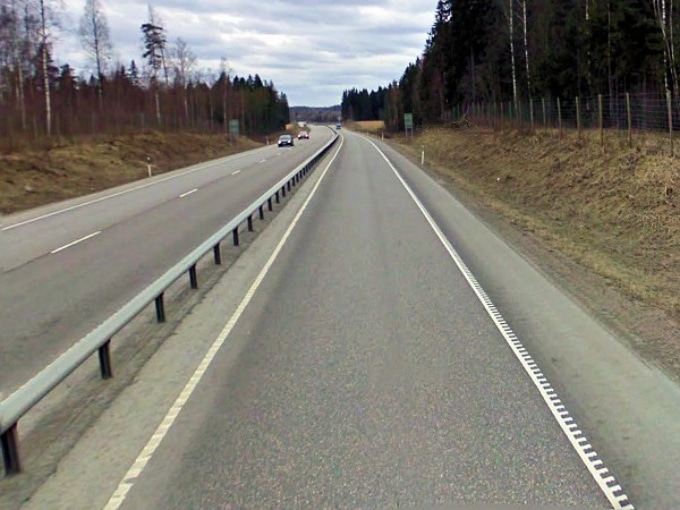
Dear Premier Houston and Minister Masland,
I congratulate you both on the opportunity to serve all Nova Scotians.
I read Premier Houston’s mandate letter to Kim Masland, Minister of Public Works dated 14 September with concern. You write:
“As Minister of Public Works, you will:
Within the first 90 days of your mandate, prepare a timeline for completion of all tasks below over the next four years. The initial timelines are to be updated quarterly thereafter.
- Double the Gravel Road Reconstruction Program.
- Double the Rural impact Mitigation Fund.
- Honour road commitments made by the previous government in their five-year plan.
- Develop infrastructure to support the health system.
- Remove the tolls on the Cobequid Pass, starting the process immediately.
- Invest in new and expanded connections to HIAA from key strategic destinations and new destinations. Where possible, new cargo routes will also be extended with a primary focus on speed to market.
- Clearly enshrine in legislation a mandate that all new government buildings and any major renovation must be net-zero will help to decrease our GHGs over time.
- Ensure that new provincial buildings are net-zero and that all major provincial building retrofits will be low-carbon, reducing embodied carbon and ensuring 75% of domestic office floor space (new leases and lease renewals) will be in net-zero carbon climate resilient buildings starting in 2030.
- Within the first six months of your mandate, review the ownership of all non-essential assets by the province.”
There is no mention of:
- The need to meet the clear aims and requirements set out in the current Provincial Sustainable Transport Strategy.
- The Traffic Safety Act and associated Regulations, which remain a work in progress.
- Active Mobility.
- A current road safety crisis that disproportionately affects senior vulnerable road users.
- The need to urgently develop a provincial road safety strategy in conjunction with key road safety stakeholders.
- The need to reassess the decision to enable car travel and parking (instead of Park & Ride) for 90% of visitors to the Halifax Infirmary hospital site.
- The need to support a transition to sustainable and efficient mobility in urban areas that will address disproportionate and unsustainable levels of car use.
- How and why the current five year spending plan, likely requiring billions of dollars until 2026, should be reviewed due to a climate emergency, and emissions targets.
Transportation enables us to do the activities we need and want to do. Walking, biking, driving, and taking the bus help us get to work, to the market, to the doctor, and even out to the ocean to play. Transportation is essential to our quality of life, economic progress, and overall health. Over the last century, we have become increasingly dependent on one type of transportation: the automobile. The car has made our lives easier in many ways. It allows us to move quickly and travel much farther than was once possible. However, our current transportation system and patterns of land use development, which have been designed around the personal vehicle, need to change.
The above is not my words. This is introductory content from Nova Scotia’s current Sustainable Transportation Strategy, found on the NovaScotia website.
I appreciate Nova Scotian travel is grounded in car use, even in urban areas where experts agree this is unsuitable and unsustainable. However, the Provincial sustainable transport strategy sets out comprehensive research-backed reasons why a shift in lifetime travel habits is needed, and how it can happen: By ensuring all infrastructure decisions and funding commitments are made using a sustainable transport lens.
It is difficult to understand how and why such a thoughtful and expertly written collaborative strategy has been sidelined. Perhaps established habits of investment and travel are too easy to maintain? The same old emphasis on highway twinning, parking lots, new roads and bridges remains the funding mainstay within the Liberal five year infrastructure plan, which you have chosen to honour.
The Sustainable Transport Strategy sets out an approach to infrastructure investment that a Government placing sustainability and fiscal responsibility at the centre of policy choices cannot afford to overlook.
Investment that increases capacity for more cars will induce demand for more car use, creating a vastly more expensive and dangerous future for everyone. It requires the bulk of investment to be focused on creating and maintaining expanded road networks, preventing meaningful investment in an adequate network of public transport, bus and cycle lanes, sidewalks and frequent safe crosswalks.
I fully anticipate a response outlining your limited commitments to cycle routes, a proposed new ferry route from Bedford, and multi-use trails used mainly for ATV’s or health and fitness. This is not adequate. Ireland has committed 70% of its transport funding to active mobility. Wales has announced a freeze on new road infrastructure investment due to the climate crisis. These are both countries with significant rural road networks, many which I am sure Nova Scotian traffic engineers would understand desperately require widening and improving.
A commitment to the existing direction found within Nova Scotia’s sustainable transport strategy must be acknowledged as the appropriate orientation for transportation infrastructure that meets the needs of current and future Nova Scotians.
Opportunities to part-fund lasting change including Halifax’s bus rapid transit network cannot be overlooked or regarded as secondary in importance to Highway twinning or new roads. This is an investment with immense cost saving potential for generations of residents. With adaptations it can potentially also serve as a Park & Ride service for both downtown and the Halifax Infirmary hospital, thus preventing the need for car parking and road widening where there is least room and most expense involved.
With new governance, now is the right time to announce a fiscal review of the current spending commitments within the five year infrastructure plan. For the current budget year, the capital highway spend is expected to reach $500 million. By 2026, it will likely require billions of dollars.

A review can be led through both a lens that acknowledges the relevance of the current sustainable transport strategy and by proposing a ground-breaking Provincial road safety strategy examining cost effective road safety strategies including alternatives to Highway twinning. I would welcome the opportunity to be involved, as I am sure would many residents, academics, experts, staff, stakeholders and professionals.
With best wishes
Martyn Williams
If you walk, cycle or use a wheelchair and are affected by road safety issues, please join HRM Safe Streets for Everyone. If your local crosswalk needs a crosswalk flag, please contact the Crosswalk Safety Society. Please remember to report issues affecting your safety to our municipal authorities using the 311 service.
Check out our new community calendar!
With a special thanks to our generous donors who make publication of the Nova Scotia Advocate possible.
Subscribe to the Nova Scotia Advocate weekly digest and never miss an article again. It’s free!



